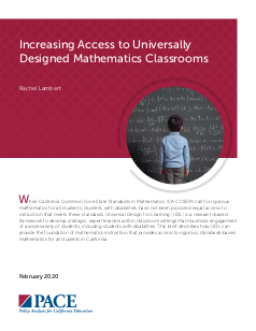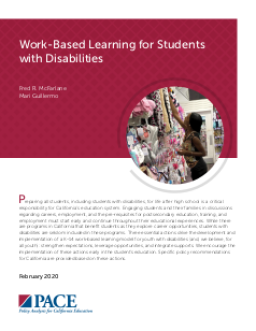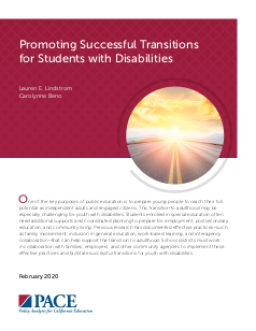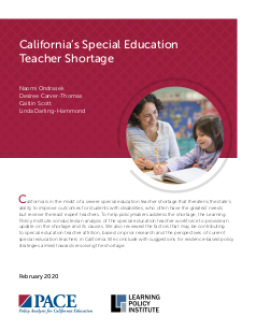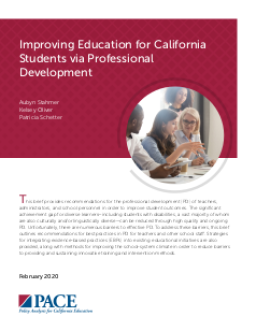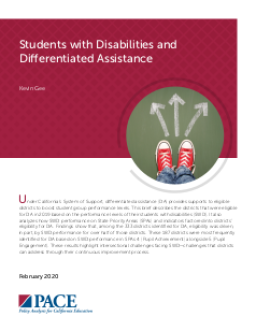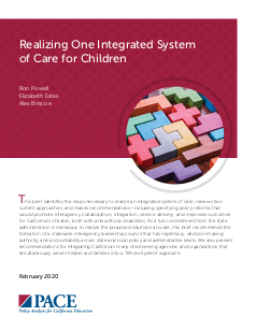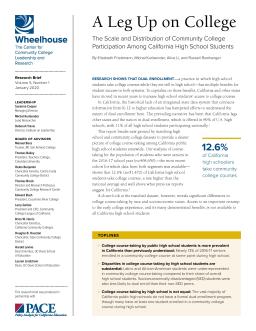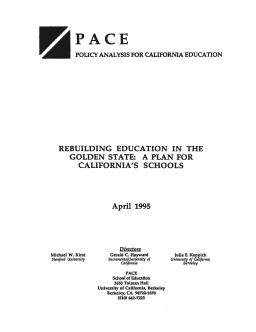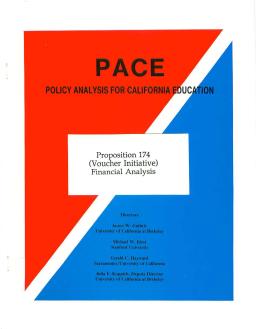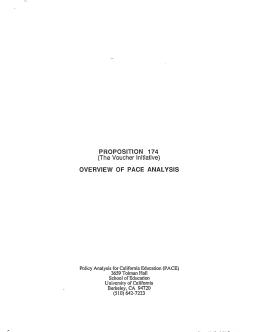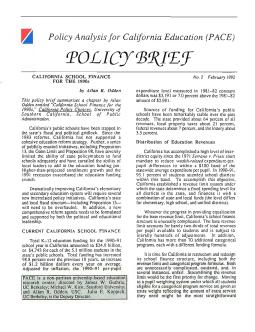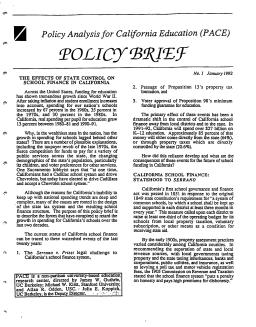Summary
This brief explains that while the California Common Core State Standards in Mathematics require rigorous instruction for all students, those with disabilities do not always have equal access to this instruction. It recommends the use of Universal Design for Learning (UDL), a research-based framework that enables expert learners within classroom settings and maximizes engagement for all students, including those with disabilities, to provide access to rigorous, standards-based mathematics instruction for all students in California.
Summary
Students with disabilities should be included in programs that prepare them for life after high school. This can be achieved through a K-14 work-based learning model, which involves strengthening expectations, leveraging opportunities, and integrating supports. Early implementation of these actions is encouraged, along with specific policy recommendations for California.
Summary
Summary
Summary
Summary
Summary
Summary
Summary
California has sought to increase high school students’ access to college courses through dual enrollment. This brief matches high school and community college datasets, revealing that 12.6% of state high school students take college courses, higher than the national average. However, Latinx and African American students, as well as socioeconomically disadvantaged students, were underrepresented in community college course-taking. The vast majority of California public high schools lack formal dual enrollment programs, limiting access to an important onramp to the early college experience.
